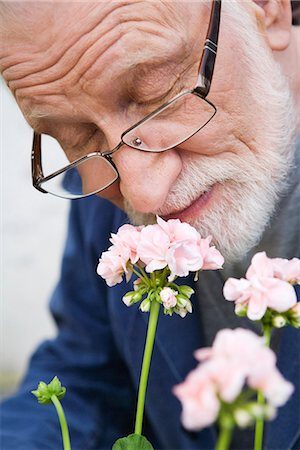
One of my clients bought for herself a few years ago a bracelet which had the following reminder stamped on it which she hoped to follow: Enjoy The Journey.
If one is going to live one’s life by any mantra, this is most certainly a good one. And yet, when we are struggling (and even when we’re not) how does one actually put this enjoyment into practice?
Some of us might do this naturally, but certain personality types, let’s say more anxious ones, or those who might be described as Type-A personalities often struggle to “stop and smell the roses” even though they have the have the best intentions for doing so.
For this reason, I’ve recently been reading a wonderful book by psychologists Fred Bryant and Joseph Veroff called Savoring: A New Model of Positive Experience. Apart from providing a fascinating psychological overview to this often overlooked dimension to human experience, Veroff and Bryant also give us some very clear and easy-to-follow ideas with regard to how we might practice savouring.
And after reading the book, it is very clear to me, that savouring is a skill, and like all skills needs to be practised. For some it might come naturally, but for most of us, it actually requires a little bit of conscious effort to Enjoy the Journey.
For this reason, I thought I might share with you their final chapter (edited a tad so as to make it a bit more readable – it was originally written for an academic audience), as I think there’s lots in here which can be applied in our lives without having to do a mindfulness course or give up on our most valued obligations and life goals. I’ll hand you over now to Joseph and Fred.
ENHANCING SAVOURING

How can people promote savouring experiences in their lives, as so many would like to do? How can people cultivate the capacity to appreciate the wonders of life, to cherish precious memories from the past, to anticipate good things the future may hold, to capture the joy of the moment?
Are there simply people who can or cannot savour—that is, “savourers” and “nonsavourers,” the way we speak of extraverts and introverts, or optimists and pessimists? Or is it possible for people to learn to think and act in ways that enhance the quality of the savouring experiences in their lives? If it is possible to become more adept at savouring, then what specific approaches or orientations should people adopt if they want to enhance savouring? And how can people learn these approaches to savouring?
Let’s sets out some guiding principles that could enhance savouring for everyone, regardless of whether or not they easily or customarily savour positive experiences. Our deeply ingrained training as social psychologists makes us believe that under carefully crafted conditions, it would be possible to elicit savouring experiences in almost anyone, regardless of the individuals starting point. Accordingly, we consider this primer a sort of Beginner’s Guide To Savouring.
To add to our hubris, from time to time we suggest exercises one can do that embody some of the generalizations we make. These exercises are based on our earlier discussions of savouring, as well as on techniques borrowed from the literature on meditation, psychotherapy, and emotional regulation. We close by suggesting that true happiness lies not just in knowing how to savour, but also having the wisdom to savour in ways that provide meaning and purpose.
THREE ESSENTIAL PRECONDITIONS FOR SAVOURING
 In our general definition of savouring, we contend that three critical preconditions must exist in order for savouring to occur.
In our general definition of savouring, we contend that three critical preconditions must exist in order for savouring to occur.
First, people must be relatively free of pressing social and esteem needs.
Second, people must be focused on attending to their present experience.
And third, people must have some degree of awareness of the positive feelings they are experiencing.
For people who savour their lives easily, these preconditions arise quite automatically. But what about people who find it hard to savour, who have trouble breaking free of distracting thoughts, staying present-focused, or being mindfully aware of positive feelings? What can we do to foster these three preconditions for savouring if they don’t always come naturally to us?
We now suggest some basic aids to set the stage for savouring.
1/ Putting Brakes on Our Worrying Minds
With the demands and rewards of most peoples everyday life, it may be a tall order to forego thinking about the responsibilities and social incentives that compose the world we inhabit. It is not as if people have internal switches that allow them to turn off their ordinary pursuits. Nor is it necessarily easy to stop oneself from worrying about problems and concerns in ones life. But if we all have a finite amount of attentional resources (we do!) then we might like to optimize our emotional experience whenever we can. Worrying and thinking about pressing problems deplete these attentional resources and reduce peoples ability to give their time and attention to savouring. If savouring experiences are the “flowers” of our lives, we might need to find ways to make sure that the “flower beds” of our minds are regularly weeded!
How to cutback or cutdown on worrying is a huge area of research and experimentation that each individual will need to try out different strategies on and see what works for them.
Most of the research done on this topic suggests that the particular set of “stopping rules” people adopt when worrying can determine how long they persist in ruminating. Individuals who worry until they no longer feel like continuing stop worrying sooner than those who worry until they feel they have generated as many potential solutions as possible.
One implication of this finding is that the more strongly one believes worrying can help solve problems, the harder it may be to savour.
If however, after perhaps considering the extent to which worrying about the future or regretting the past is recognised by us as a hinderance to enjoying the journey of our lives, we may choose to make “Worrying” itself the problem for our minds to solve, as much as the various existential issues we get stuck on or in. If we want to savour more, then we need to find and practice ways to check our worries at the door. A therapist can be really helpful when working on strategies for doing this.
2/ Focusing on the Present
 It might be worth utilising for this task “intentional mindfulness qualities” that Jon Kabat- Zinn lists as being conducive to meditation. We particularly highlight the qualities of: (a) nonjudgmental orientation (i.e., “impartial witnessing” or not getting too stuck in the mind’s predisposition to evaluate and judge); (b) openness (i.e., seeing things as if for the first time); and (c) acceptance (i.e., being focused on things as they are in the present).
It might be worth utilising for this task “intentional mindfulness qualities” that Jon Kabat- Zinn lists as being conducive to meditation. We particularly highlight the qualities of: (a) nonjudgmental orientation (i.e., “impartial witnessing” or not getting too stuck in the mind’s predisposition to evaluate and judge); (b) openness (i.e., seeing things as if for the first time); and (c) acceptance (i.e., being focused on things as they are in the present).
How people become nonjudgmental, open to novelty, and present-focused will probably require a lot of experiential tweaking. The practical results of this will possibly look different for everyone who engages in this pursuit. For example, becoming nonjudgmental might require consciously reminding oneself not to evaluate ones ongoing experience. Becoming open to novelty might require purposefully doing or trying something different for a change. Becoming more present-focused might require putting away ones appointment book and removing ones wristwatch. Shortly, we will present a few exercises aimed at helping people foster these critical qualities during positive experiences.
3/ Enhancing Our Focus on Positive Experience
 The third condition necessary to establish a savouring context is the capacity to enhance attentional focus on pleasurable aspects of ones ongoing experience.
The third condition necessary to establish a savouring context is the capacity to enhance attentional focus on pleasurable aspects of ones ongoing experience.
We have suggested from the very beginning that savouring is not simply experiencing pleasure or enjoyment. On the contrary, savouring involves taking the perspective of an inquiring journalist toward ones own pleasurable experiences and then reporting these inquiries to oneself.
One suggestion that can help people focus more intensely on the present is to avoid multitasking, or what has been termed polyphasic activity. Polyphasic activities involve “trying to think about or to do two or more things simultaneously”.
A hallmark of Type A behaviour, these frenetic, time-urgent pursuits divide ones attention among multiple targets, thereby making it harder to attend to the joy of a happy moment as it is unfolding. It is hard for people to focus closely on the joy they feel if they are also thinking about or trying to do other things at the same time. Thus, people can enhance savouring by devoting their attentional resources more exclusively to those aspects of ongoing positive experience that they find enjoyable.
The Time Management Guru, Alan Lakein suggests that people ask themselves, “If I knew I would be struck dead by lightning six months from today, how would I live until then? (This means you would have only six months to live and would have to squeeze whatever you consider important into your dramatically reduced time on earth …)”
Slightly modifying this perspective, we suggest that when people encounter a positive experience, they imagine that this is the last time they will ever go through the particular experience, be it a beautiful sunset, a conversation with a friend, sipping a warm cup of tea, or a stroll on the beach.
Imagining the positive moment to be a last-of-a-lifetime experience produces an extremely intense bittersweetness, making the present much more vivid and salient; and imagining one will never again experience the particular moment (i.e., downward counterfactual thinking) dramatically accentuates the positive features and feelings involved through this contrast, making it easier to notice and appreciate those aspects of the moment that are most readily savoured.
Another strategy to enhance savouring is to become more aware of ones positive feelings. Just as people vary in their baseline levels or ranges of positive affect, people also vary in the degree to which they are consciously aware of their own feelings. Along these lines, we suggest that people practice noticing and explicitly labeling their positive moods, so as to enhance their ability to savour.
For example, the next time you find yourself going through a positive experience, take a moment to try to identify the specific positive feelings you are experiencing. First, find words to describe your pleasant feelings. Are they affectionate, mellow, awesome, energizing, uplifting, exciting, or empowering? Are they fun, fulfilling, comforting, inspiring, heartwarming, prideful, or grateful? Are they happy, pleased, satisfied, content, glad, relieved, or elated? Try first to put your finger on exactly what it is you are feeling. You may well be experiencing more than one positive feeling. Once you have put your positive feelings in words, tell yourself explicitly at that moment that you are feeling this way right now. Then return your attentional focus to the stimuli or event from which you are deriving these feelings in the first place. Practicing this process of attending mindfully to positive feelings, and explicitly labeling them, can help one become more aware of positive feelings and thereby enhance ones ability to savour.
THREE GENERAL SUGGESTIONS FOR ENHANCING SAVOURING

Next we offer three general suggestions drawn from our research on savouring that people often find helpful to enhance the situational conditions that are ripe for savouring experiences, and for each of these suggestions, we provide specific exercises designed to induce savouring.
The three areas we focus on here are:1) taking time out from everyday activity, 2) becoming more open to experience, and 3) deliberately narrowing one’s focus on something pleasurable.
Each of these exercises are designed to give you an idea of how you might include more savouring in your life. But please feel free to adapt them to your interests. Be creative and make up your own exercise if you can, using the principles described above.
1/ Taking Time Out From Everyday Activity
A basic strategy that enhances opportunities to savour is to purposely take “time outs” from ordinary ongoing life. The momentum American men and women establish for accomplishing what needs to be done for their lives often requires a 48-hour day. By and large, if you are reading this, you are probably an “earnest worker”, trying hard to earn enough for a comfortable standard of living.
And the time you spend doing nonwork tasks such as shopping, cooking, cleaning, and fulfilling required social functions is endless. There are no siestas for us (we tell ourselves). Indeed, we often indulge in recreation with the same earnestness. We get tired, and sometimes find that collapsing in front of the TV set is the most satisfying respite from the pace. Mindless TV viewing — for what else is there to savour, if people work, play, and carry out their routines so earnestly and so breathlessly that time does not stop long enough for them to appreciate the good things around them?
A remedy for this pace of existence clearly is to take some time off to let life pass more slowly. Anything that makes people step off life’s daily treadmill without discomfiting them or arousing their guilt or concern about falling behind in their work could be part of such a remedy.
Vacations sometimes are meant to do just that. And yet there are people who pursue vacations in the same pell-mell pace that characterizes their daily schedules. For these people, the pursuit of leisure becomes a job rather than a joy. However, if vacations really bring a shift in the pace of life, then vacation time might be an ideal time for savouring, or a time to try out some of the other exercises we propose to invigorate savouring. In fact, the word “vacation” comes from the Latin word vacare, which means to be free or exempt, as from stress, burdens, or obligations. For most people, however, vacations come but once or twice a year. A remedy for these people is to build daily or weekly “minivacations” into their lives or regular routines.
Indeed, minivacations are sometimes easier to arrange than longer holidays. A weekend getaway, a day off from work, time away from having to cook, or freedom from other types of everyday responsibilities in one way or another—at these moments of escape from the daily grind, deliberate strategies for savouring can be applied, if savouring processes are not automatically activated.
One tip for enhancing savouring is to become more proactive rather than purely reactive in finding enjoyment. Note that there is a natural asymmetry between coping and savouring. On one hand, the sorrows in life inevitably find us and force us to feel them despite our best efforts to avoid them, and they require us to actively cope to reduce their negative emotional impact. On the other hand, the pleasures in life more often require us to hunt for them or else they will not happen despite our best hopes, and they require us to actively savour to enhance their positive emotional impact. These facts suggest that people should make savouring a priority if they wish to enjoy themselves.
Along these lines, it is important to recognize that the frequency and intensity of positive affect are largely independent, and the frequency of one’s positive affect is a stronger predictor of overall level of happiness than is the intensity of one’s positive affect. These findings would suggest that increasing the total number of savouring episodes you have will boost overall happiness more than simply intensifying enjoyment while you are savouring just one episode.
Indeed, increasing the number of pleasurable activities in which people engage has been shown to increase subjective well-being and decrease subjective distress. Here we present a semistructured activity, Daily Vacation Exercise, that helps people practice savouring proactively in the context of everyday life.
The Daily Vacation Exercise
- Each day for one week, plan and participate in a formal “daily vacation” during which you spend time doing something you find enjoyable for at least 20 minutes. This activity might be going for a walk, sitting quietly in a garden, reading a book, treating yourself to a cup of coffee, going out to eat, visiting a museum or art gallery, taking a shower or soaking in a bathtub, spending time with a friend, or watching a sunset. Be creative in finding sources of enjoyment that you can look forward to and savour. This exercise works best if you do not use the same activity every day, but instead seek a variety of experiences in your daily vacations.
- Before starting each daily vacation, make sure to set aside worries and concerns, pressing responsibilities, and sources of stress for at least 20 minutes, and do your best to structure the situation so as to prevent distractions while you are savouring. Remind yourself not to be judgmental, but rather to see things as if for the first or last time, and to focus on what is happening and what you are feeling as it unfolds in the present.
- While you are on your daily vacation, try to notice and explicitly acknowledge to yourself each stimulus or sensation that you find pleasurable. Identify your positive feelings and explicitly label them in your mind. Actively build a memory of the feeling and the stimuli associated with it, close your eyes, swish the feeling around in your mind, and outwardly express the positive feeling in some way.
- At the end of your daily vacation, plan your daily vacation for tomorrow and begin to look forward to it. At the end of the day, look back on your daily vacation, and recall and rekindle the positive feelings you savoured.
- At the end of the week, take a few minutes to recall all seven of your daily vacations. Look back at the activities you enjoyed doing and try to reexperience the positive feelings you felt during each daily vacation. Compare the way you have felt over the past week and the way you feel right now to the way you usually feel during a typical week. People typically report having felt happier a greater percentage of the time during their week of daily vacations and report feeling happier at the end of the week, compared to the way they usually feel.
The purpose of The Daily Vacation Exercise is to give people direct experience with proactive savouring, to give them the opportunity to bring savouring into their lives on a regular basis, and to help them practice the art of savouring daily life. After engaging in this exercise, some people may want to make daily vacations part of their everyday routine.
2/Becoming More Open to Experience
Once there is time to experience life in a savouring mode, it is most helpful for us if we are open to and aware of the varieties of experience that are there to be savoured. We all need to relax sufficiently to undo the restraints on our views of the world and our various selves if we are to let savourable stimulation enter. We have described earlier a general way of extending the duration of savouring as chaining together ones positive experiences. One kind of chaining is a set of free-associative linkages that one creates, sometimes haphazardly, other times intentionally.
Next is an exercise, The Life Review Exercise, that can facilitate this kind of associative chaining in contemplating ones life.
One Way To Do This: The Life Review Exercise
- Identify an activity or experience that you currently savour in the way we have defined savouring so far.
- Think of the last time you had such a savouring experience, and write down in as much detail as you can the situation you were in, the people who were there, the place you were, the time of day, the time of year, and so on.
- Do the same for one other time that is similar to what you report in Step 2, including all the accompanying data.
- Do the same as in Step 3 for the very first time you remember savouring something in the way we have defined savouring in this book.
You might want to share these descriptions with someone who would enjoy reading them, or talk about these with your therapist.
3/Narrowing One’s Focus.
 In the next exercise, The Camera Exercise, we recommend what appear to be two paradoxical processes that always seem to be involved in savouring. The exercise requires people to narrow their focus of attention on a small, given target, and yet be wide open to any stimuli that may come their way when attending to the target with this narrow focus. We know of no better way to practice this orientation than to take photographs without an explicit goal concerning the subject or target.
In the next exercise, The Camera Exercise, we recommend what appear to be two paradoxical processes that always seem to be involved in savouring. The exercise requires people to narrow their focus of attention on a small, given target, and yet be wide open to any stimuli that may come their way when attending to the target with this narrow focus. We know of no better way to practice this orientation than to take photographs without an explicit goal concerning the subject or target.
One Way To Do This: The Camera Exercise
- This exercise can be done with the camera function on your mobile phone.
- Select a sunny day, if you can. Having an active play of light on your visual field enhances this exercise. Go to a relatively quiet location near where you live. It could be nearby, if you live in the country or on a quiet street in a town or city. It could be in a park, if you live in a noisy town or city. Find a comfortable place to sit or stand for a period of time, and simply wait there while you scan what is in your immediate field of vision.
- Find an object close by. It could be a building or part of a building. It could be a tree, or other vegetation. It could be a machine or parked vehicle. It could be anything that will remain relatively still while you gaze at it. Now take the mind-set of seeing the abstract patterns in the object that you have selected. These could be contrasts in colour, light, or shading. Or these could be variations in texture.
- Start taking pictures from different angles that represent alternative perspectives you can take in relationship to the object. Move a bit in one direction, then in another; hold the camera higher, then lower; tilt the camera to one side, then the other. Vary your stance and the angle with which you hold the camera in relation to the object. Snap an} shot that appeals to you. Don’t worry about a shot being totally balanced and symmetrical. Just shoot those images you find interesting or pleasing. Remember, the exercise is not a photo contest. Rather, it is designed to help you develop your savouring skills.
- Find another object, and repeat the procedures in Steps 3 and 4 until you have taken 30 to 40 digital shots.
- Now carefully study the pictures for patterns that please you.
- Repeat Steps 2 through 6 another day as soon as you can, photographing the same or similar objects.
The Camera Exercise forces one to attend closely and mindfully to ways in which an ordinary object can have pleasant visual effects. The photographer scrutinizes the object in the field of vision and takes time to compose an image. Often the photographic results are illuminating and reinforce the experience of enjoyment in examining objects and taking pictures. Reviewing the photos returns ones eyes to images that hold memory traces of what had previously been felt in the initial visual scanning. Of course this can also be done on the hop without a camera, but using your mind to look at a view around you, as if you were searching for a particularly striking or beautiful view or perspective which you might want to savour.
Some Final Thoughts: Savouring, Wisdom, and the Good Life

In his classic treatise on ethics, Aristotle argued that there are two distinct forms of happiness: hedonia, or the pleasures inherent in life, as when one fully savours a positive experience; and eudaimonia, or the life well-lived, as when one lives a virtuous, meaningful, or purpose-driven life.
Aristotle considered this latter form of happiness to be “the highest of all goods achievable by human action”. Others have suggested eudaimonia is more accurately defined as “the feelings accompanying behavior in the direction of, and consistent with, ones true potential”. In any event, it is important not to confuse these two different positive subjective states.
Whereas hedonia is the “life of pleasure,” eudaimonia is the “life of purpose.” Explicating the latter term, Seligman has cogently argued:
“The good life consists in deriving happiness by using your signature strengths every day in the main realms of living. The meaningful life adds one more component: using these same strengths to forward knowledge, power, or goodness. A life that does this is pregnant with meaning, and pleasure.”
In encouraging people to find ways to enhance savouring in their lives, it is not our intention to promote selfish hedonism or to suggest that pursuing the joy of the moment should be ones primary goal in life. On the contrary, the single-minded pursuit of hedonia and nothing else would be a vacuous existence aimed solely at maximizing personal hedonic gain with no higher purpose. The life of pleasure devoid of eudaimonia would be empty and meaningless indeed. Yet, the “good life’’ filled with virtue and meaning would be stolid and sterile, if it achieved eudaimonia at the price of never being able to savour ones life. The Greek philosopher Epicurus made precisely this point in arguing, “It is impossible to live pleasantly without living prudently, well, and justly, nor is it possible to live prudently, well, and justly, without living pleasantly”.
We suggest that true wisdom lies in learning to savour in ways that achieve both hedonia and eudaimonia, without trading one form of happiness for the other. Indiscriminate savouring pursues the empty pleasures to be gained in satisfying “unhelpful desires”. Along these lines, Adler argues that there are three basic types of unhelpful desires:
(a) the desire is for something that, while really good and needed, is only a partial good, yet is desired inordinately as if it were the only good, the whole good; or (b) something that, while good as a means, is a limitless good for those who desire it as an ultimate end; or (c) something that, though it may appear to be good when actually desired, is an apparent good that is noxious rather than innocuous. The prime examples of this threefold classification of the objects of unhelpful desire are (a) pleasure, (b) money, and (c) fame and power … pleasure, much more frequently than these other partial goods, is the object of unhelpful desire when it is desired as the only good, and as the ultimate goal of ones striving, (Adler 1991, pp. 37-38)
This gives us a clue to the fact that wisdom, pleasure, and virtue go hand in hand to guide one toward pursuing those things that provide meaning and fulfill purpose in life, which include those positive experiences that are truly worth savouring for the right reasons. These “moral” traits help insure that people savour their lives in ways that bring joy, awe, gratitude, pride, and pleasure, without harming oneself or others and without sacrificing eudaimonia in the process.
